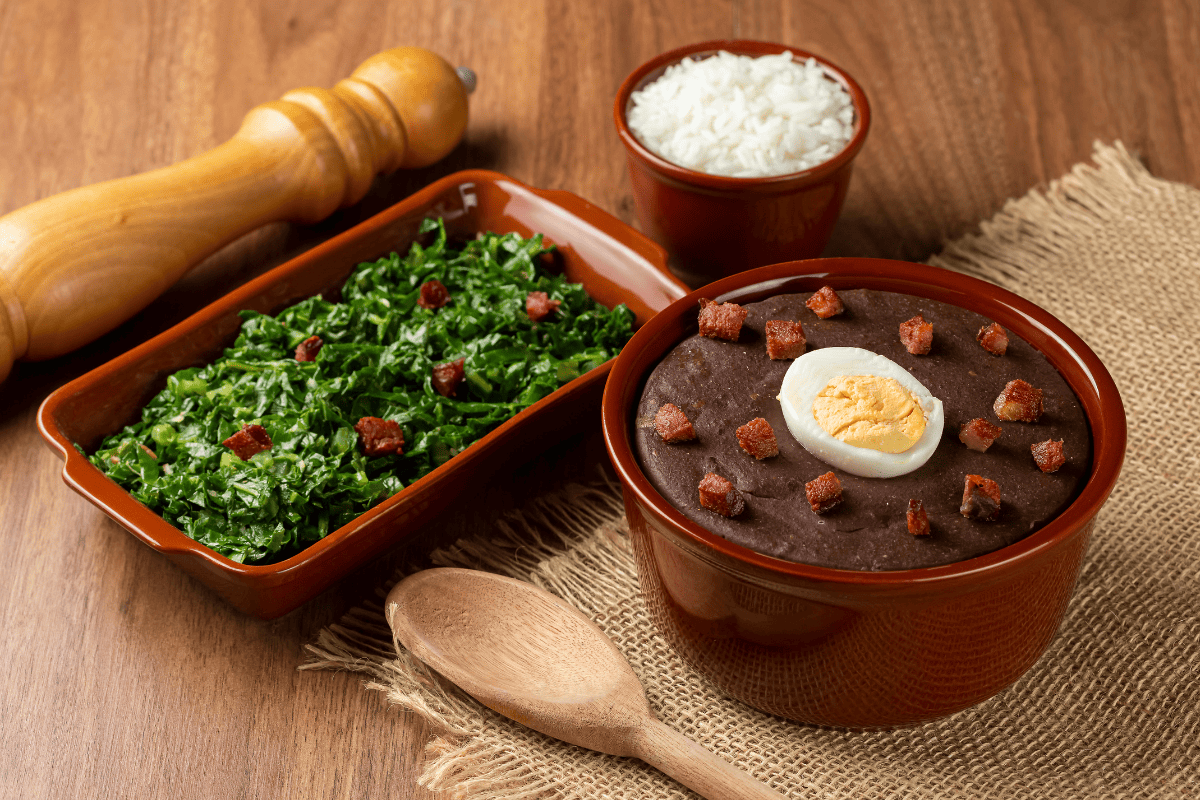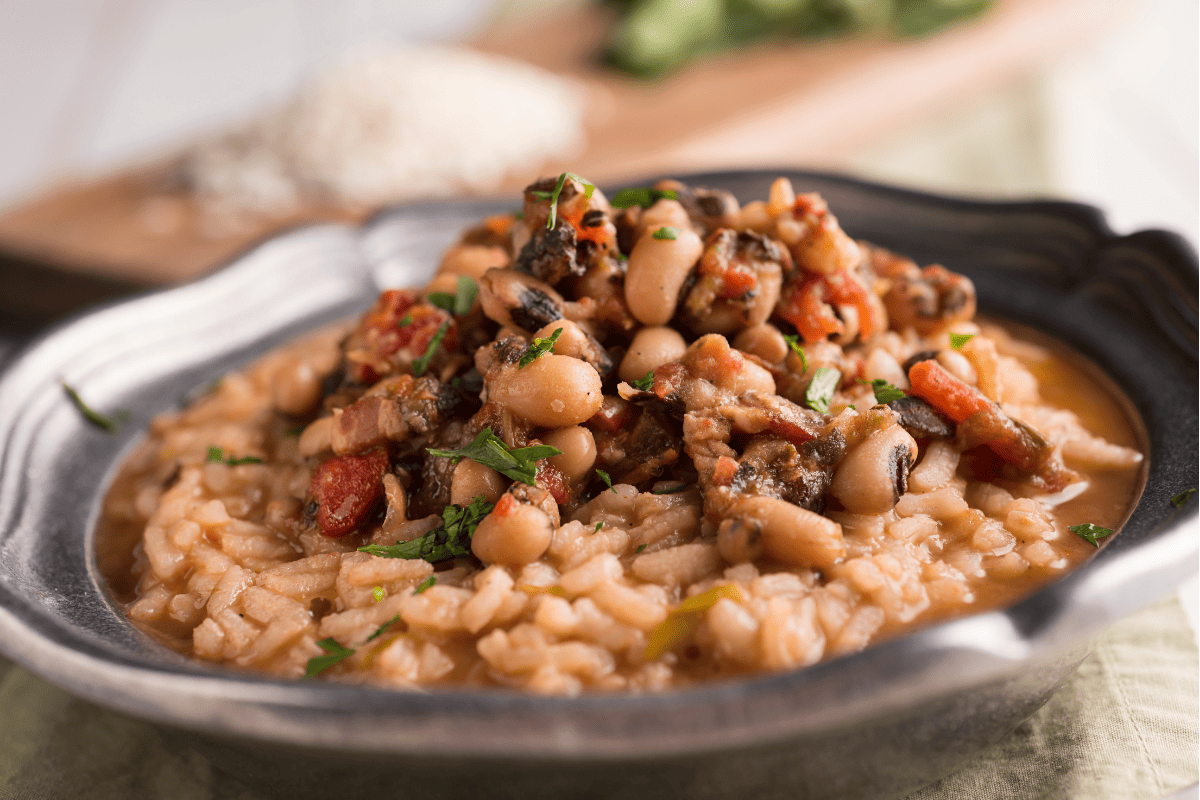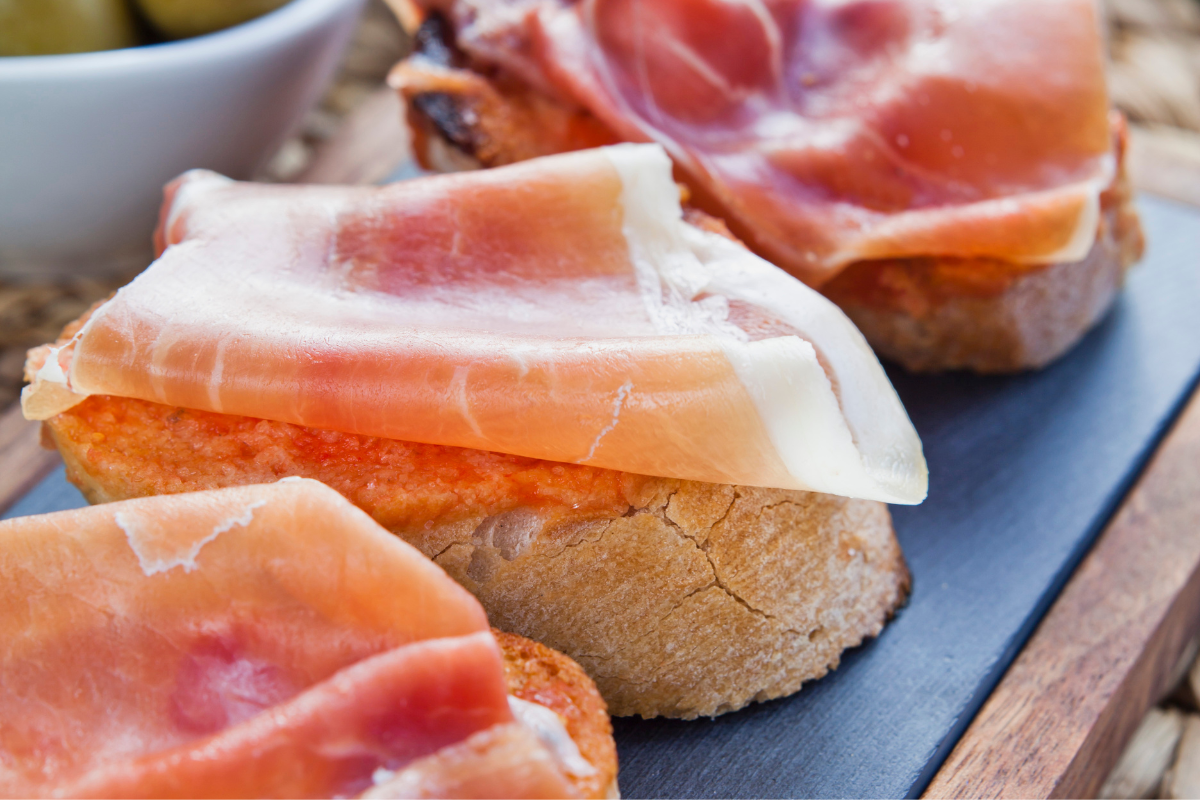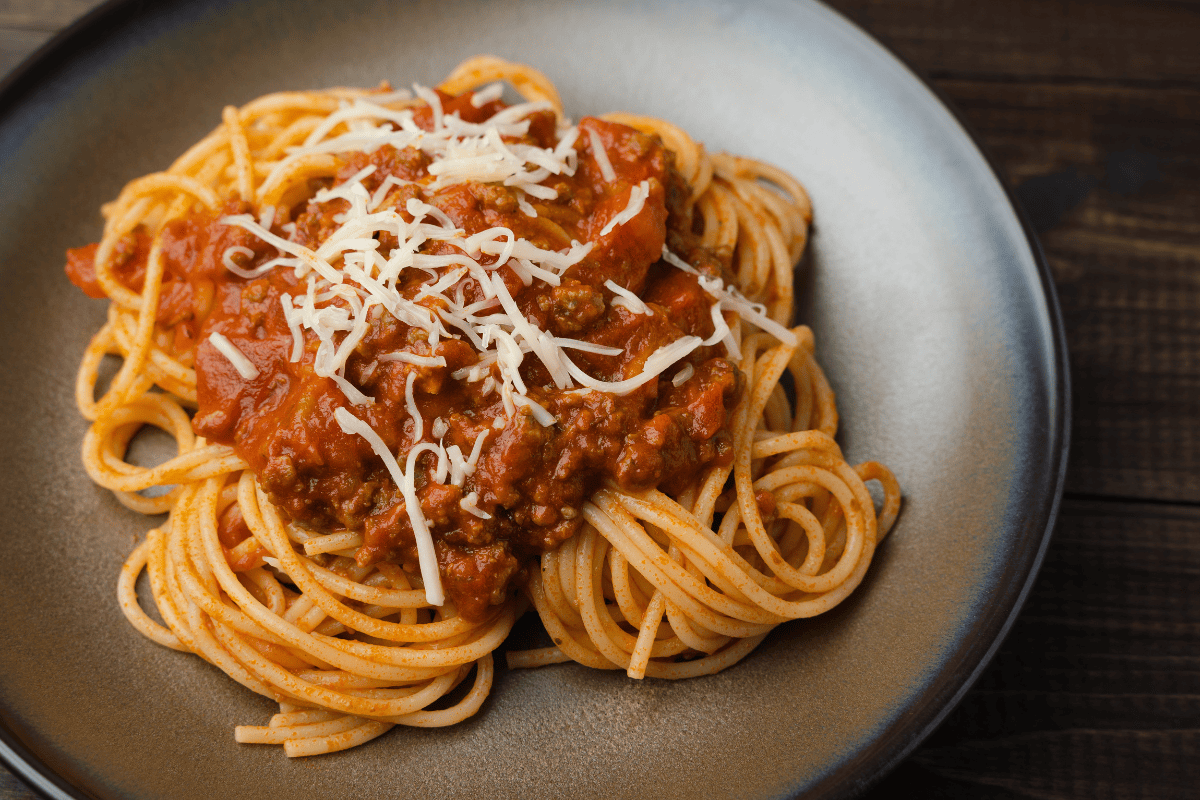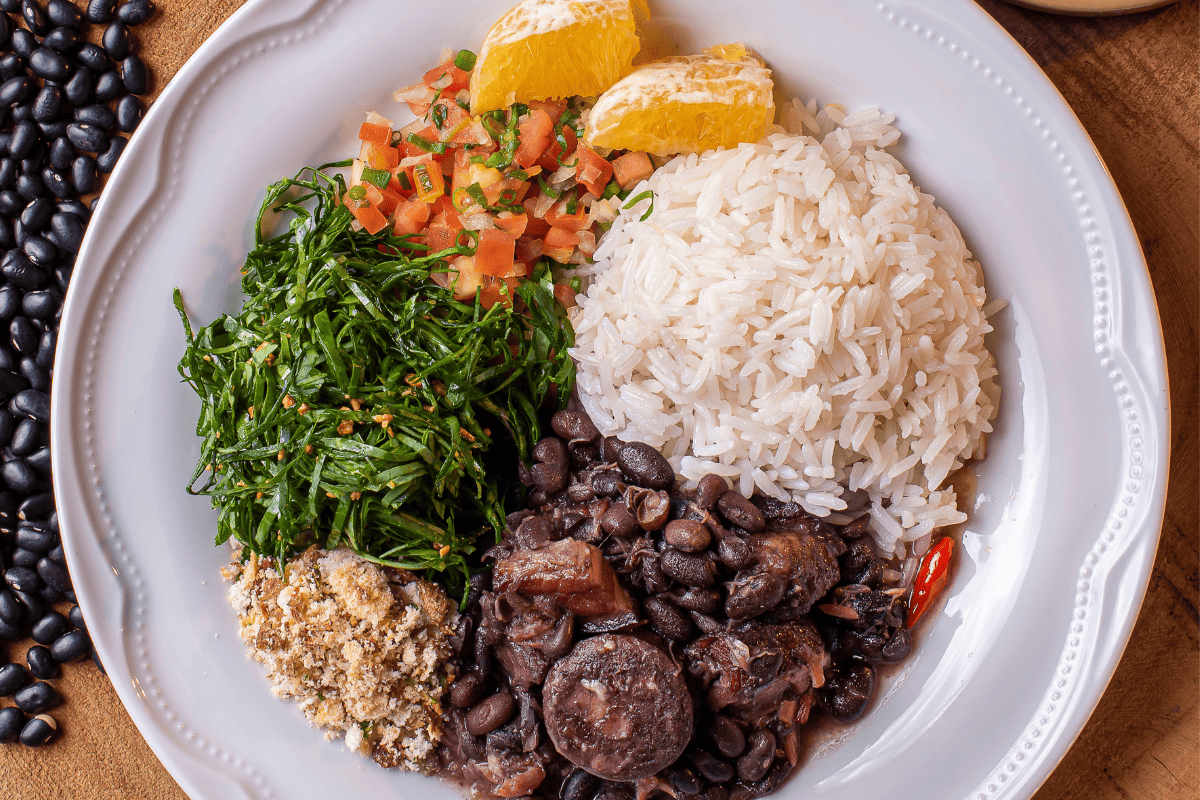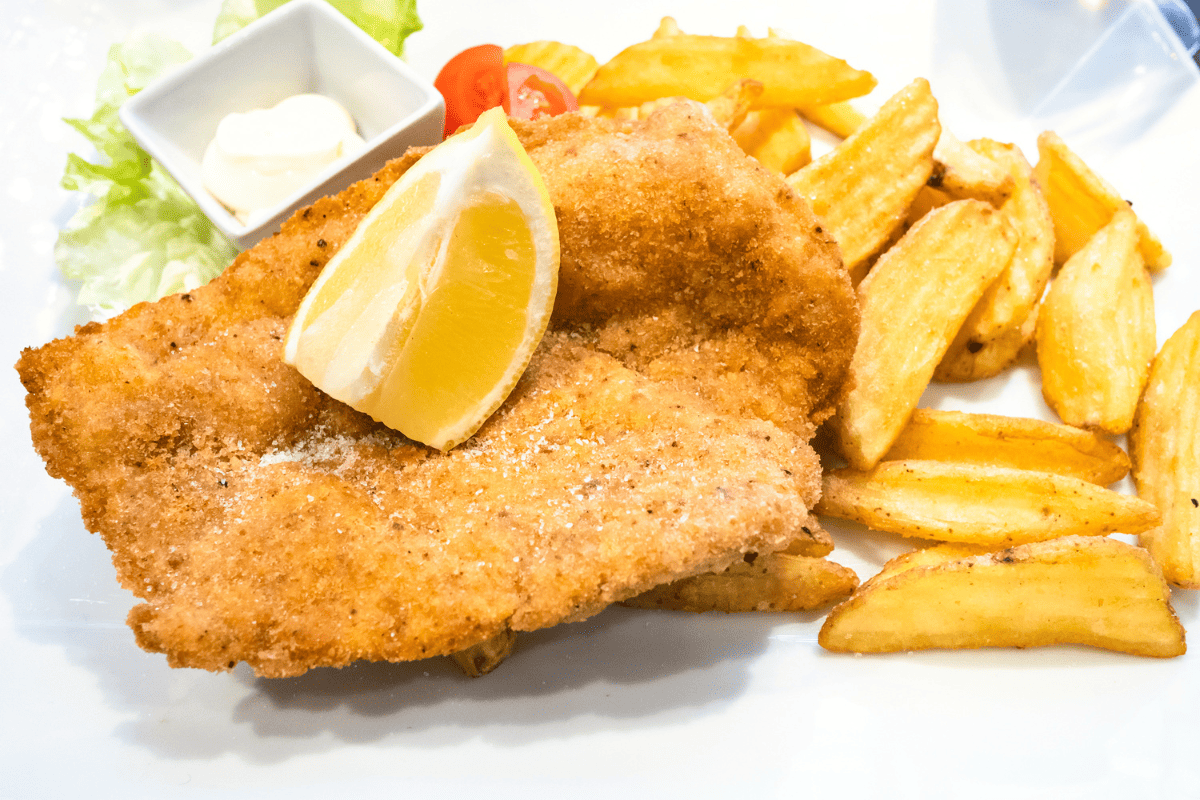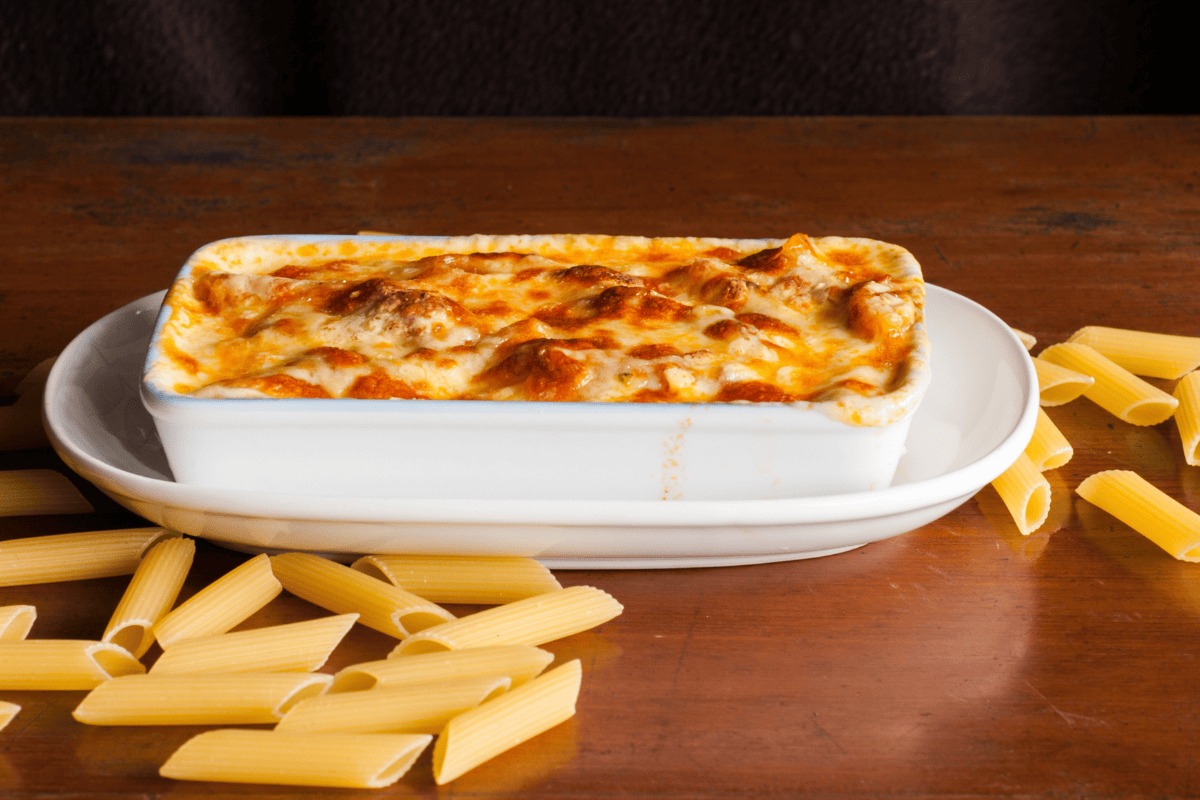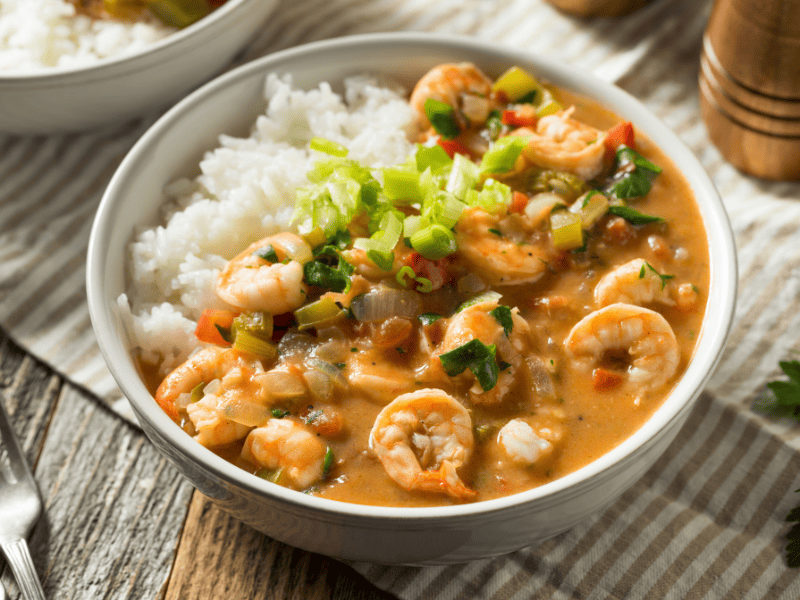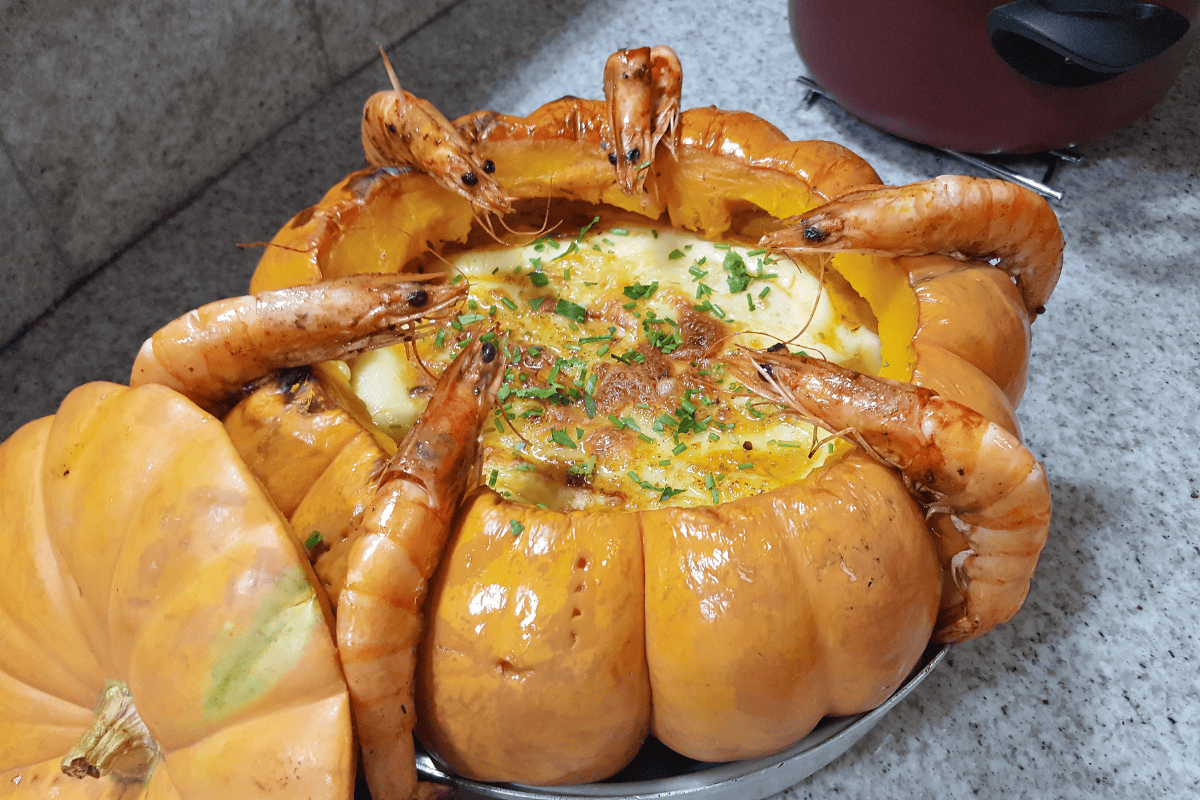
Camarao na moranga is another favorite recipe at Christmas time in Brazil, where pumpkins are available year round. In the US, however, pumpkins mean one thing: Fall. This is a perfect meal to eat on a chilly Autumn evening. Not only that, its presentation is beyond compare: creamy shrimp soup in a real, roast pumpkin shell. Trust us, you won’t want to miss trying this stuffed pumpkin recipe this Fall.
What Pumpkins are Used for Stuffed Pumpkin Soup?
Brazilians use a species of pumpkin called a moranga for this stuffed pumpkin recipe. The American equivalent would be a Cinderella pumpkin-the whimsical, somewhat squat pumpkins with a deep orange color. They are great for roasting and have a sweet, caramelized flavor when roasted.
Interestingly, the origins of this stuffed pumpkin recipe in Brazil are as fairytale-esque as Cinderella herself. It is said that the first morangas were planted by Japanese political prisoners at the Presídio da Ilha Anchieta penitentiary.
Apparently, the conditions were quite unsanitary, leading many of the prisoners to contract worms. They refused Western medicine in favor of traditional remedies, which included pumpkin seeds. Local Brazilians became intrigued by the supposed remedy, and began buying the extra pumpkins planted at the prison.
A trader carrying the pumpkins into a nearby town hit a rough patch of roadway, causing one of the pumpkins to roll off and into the sea. Miraculously, the pumpkin washed up on shore. Very coincidentally, the pumpkin was picked up by a seaside chef. When she opened it, it was supposedly full of shrimp. She was inspired to cook the shrimp inside and serve it in the hollowed out gourd. Thus, the first stuffed pumpkin recipe was born.
This wild story is fun to tell and imagine. The only thing verifiable about it, however, is the general timeline and location when the stuffed pumpkin recipe known as camaro na moranga first appeared: in the 1940s in Sao Paulo.
Squash Alternatives for Stuffed Pumpkin
While Cinderella pumpkins are typically used in the traditional Brazilian stuffed pumpkin recipe, other varieties of squash will do. Acorn squash, buttercup squash, and sugar pumpkins work well, especially if you want to make individual portions. If you want a slightly larger pumpkin “bowl,” you can also use Kobocha squash.
What Type of Shrimp for Camarao na Moranga?
For your shrimp stuffed pumpkin recipe, you’ll want to use medium or large shrimp. This ensures everyone gets a generous helping of shellfish in every portion. White or pink shrimp is fine. Be sure to use either very fresh shrimp or opt for frozen, if you doubt the quality of the fresh shrimp.
Brazilian Stuffed Pumpkin Recipe (Camarao na Moranga)
Ingredients:
One large Cinderella, kabocha, or other round roasting squash (8 lbs is good)
1 large onion, diced
3 cloves garlic, minced
Extra virgin olive oil
Kosher salt
1 fresh lime
Freshly ground black pepper
1 can stewed tomatoes
2 tbsp all purpose flour
1 cup fish stock
1/2 cup unsweetened coconut milk
2 lbs medium or large shrimp (raw/thawed, deveined, heads and tails discarded)
Fresh parsley
3 oz grated parmesan cheese
8 oz Brazilian cream cheese (you can substitute American)
Directions:
- Roast the pumpkin: Preheat the oven to 350 degrees Fahrenheit. Scoop out all the seeds and pulp. Season the inside of the pumpkin with a drizzle of olive oil, salt and black pepper.
- Replace the top of the pumpkin and wrap the whole gourd in foil. You might need a separate piece to cover the stem. Roast for 45 minutes.
- While the pumpkin cooks, heat a large saucepan over medium-high.
- Meanwhile, season the shrimp with salt, pepper, and a squeeze of fresh lime juice.
- Add a drizzle of oil to the hot saucepan. Sear the seasoned shrimp for a couple of minutes on each side, then remove. Be sure to reserve any juices produced by the cooked shrimp.
- Reduce the temperature to medium and add another drizzle of olive oil. Add in the chopped onions and cook for 2-3 minutes. Then add in the minced garlic and cook for a further 30 seconds or so.
- Add in your two tablespoons of flour and mix with the oil to form a rue. Cook for 30 seconds to eliminate the flour taste.
- Slowly pour in your fish stock, whisking constantly. Bring the mixture to a boil to allow it to thicken fully, then reduce heat to medium. As it simmers, stir in the tomatoes and coconut milk.
- Now, stir in the cooked shrimp. Let it warm through for a minute.
- If you haven’t removed the pumpkin, do so now. Leave the oven on 350 degrees Fahrenheit.
- Carefully mop up any pumpkin juice with a paper towel. When the pumpkin is dry and cool enough to touch, spread the cream cheese all over the inside.
- Now, ladle in your shrimp stew until the pumpkin is filled to the top. Sprinkle it with the parmesan cheese, and put it back in the oven (uncovered).
- Bake for 15-20 minutes, until the top has formed a golden crust.
- Garnish with fresh parsley.
- Serve this stuffed pumpkin recipe over Brazilian rice. Be sure to scoop out a little pumpkin flesh with each spoonful. The combination of shrimp stew and fresh roasted pumpkin is a match made in Heaven.

